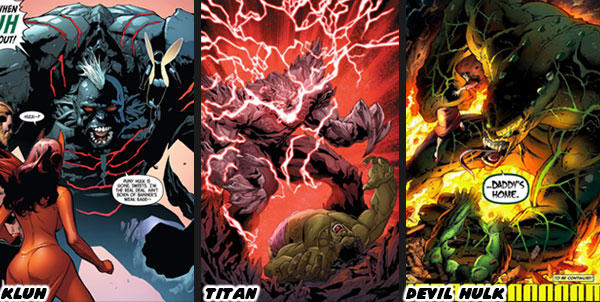

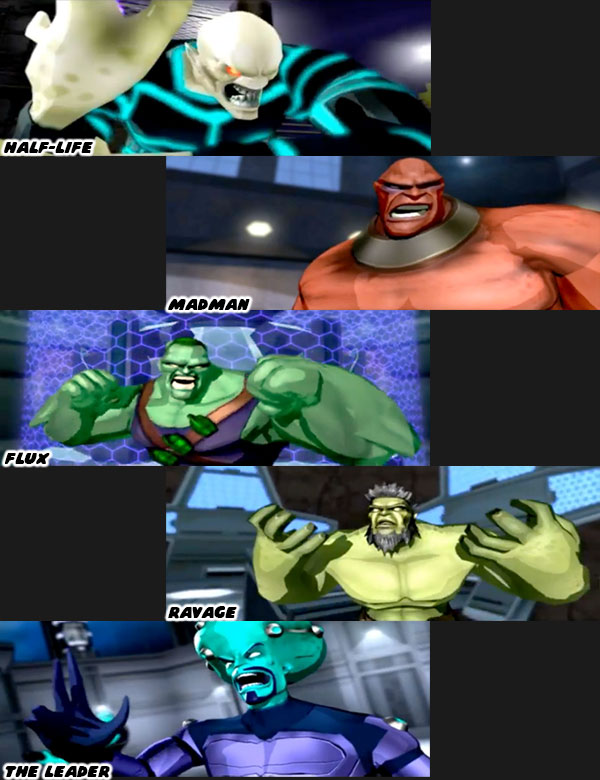


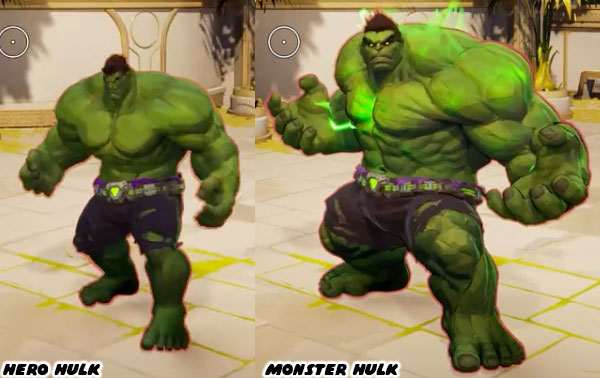
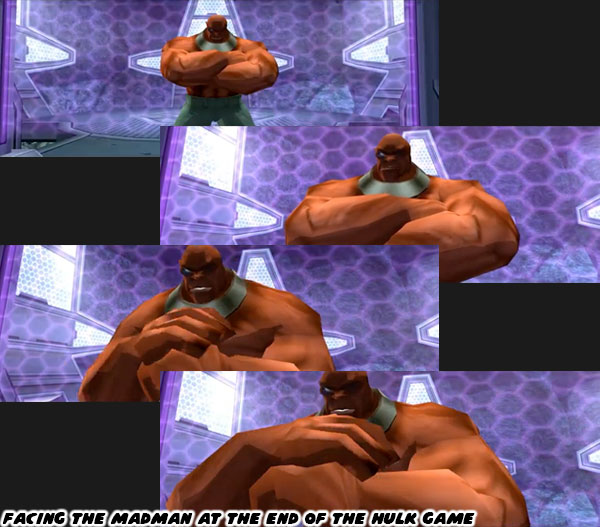
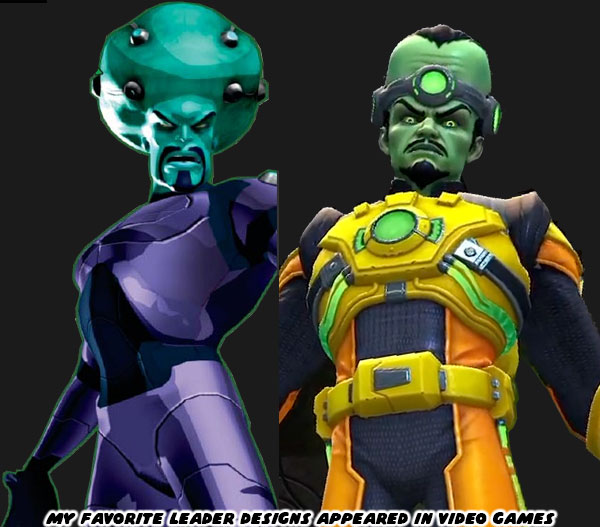
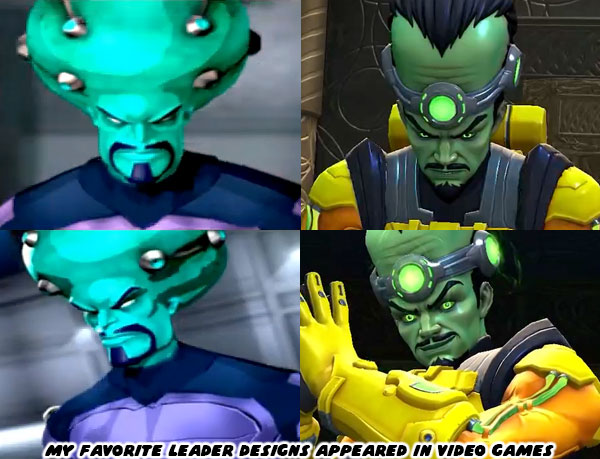
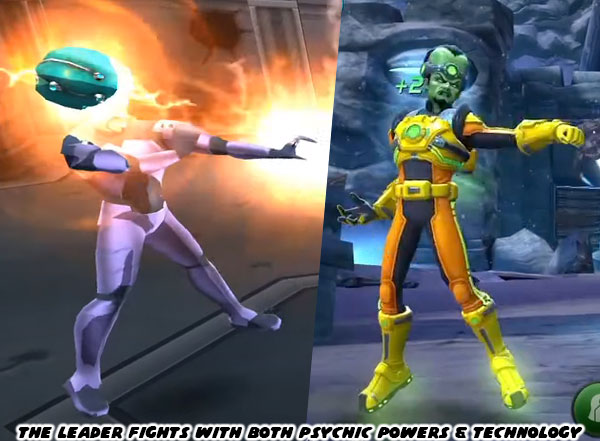
A blog about my interests, mainly the history of fighting games. I also talk about animation, comic books, car culture, and art. Co-host of the Pink Monorail Podcast. Contributor to MiceChat, and Jim Hill Media. Former blogger on the old 1UP community site, and Capcom-Unity as well.











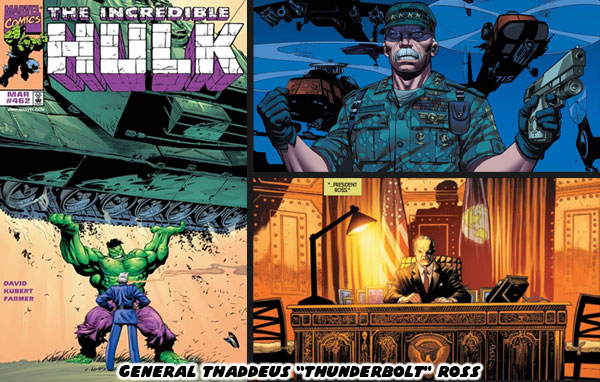

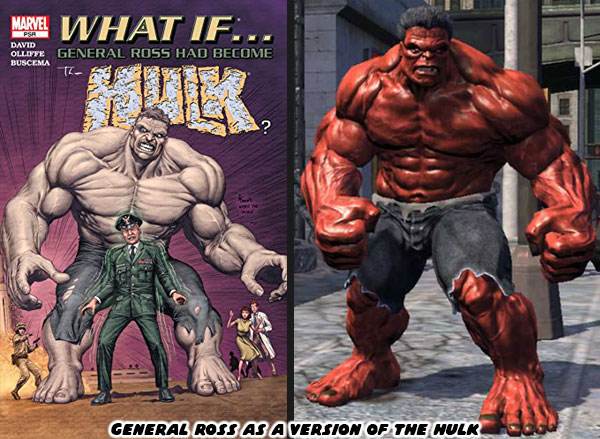
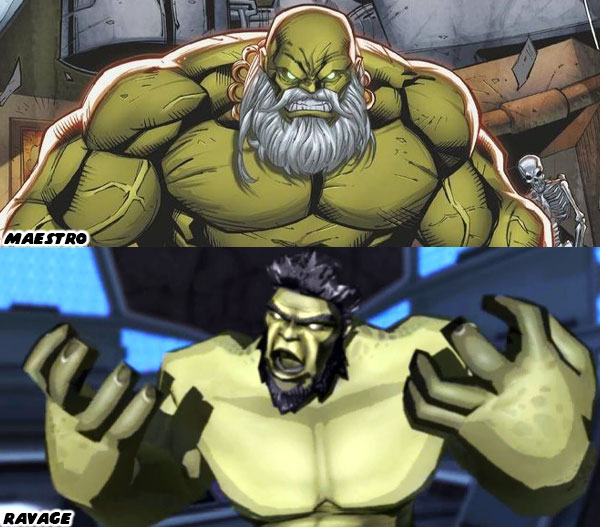
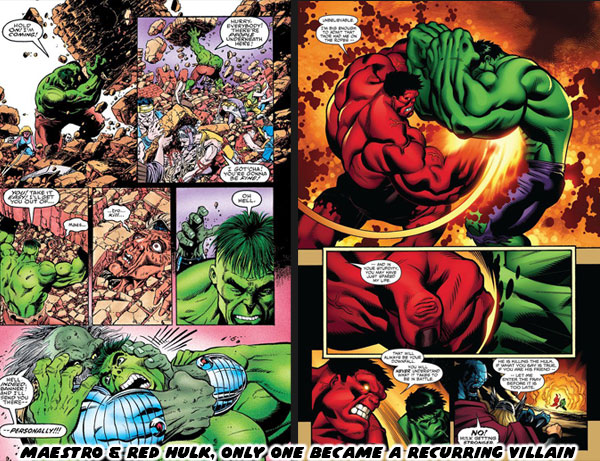

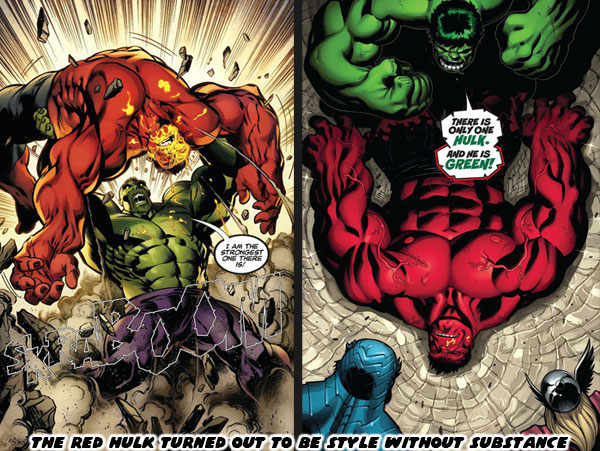
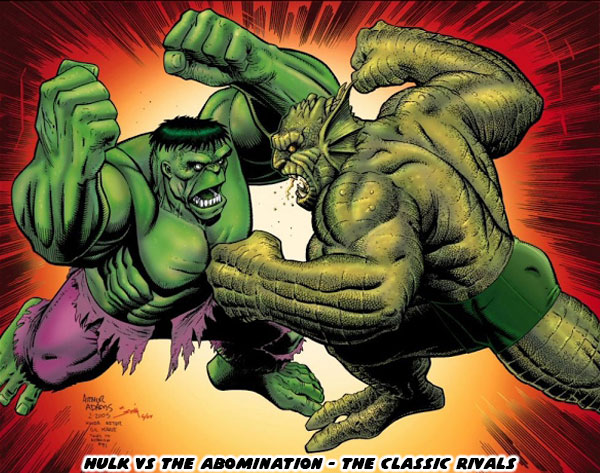
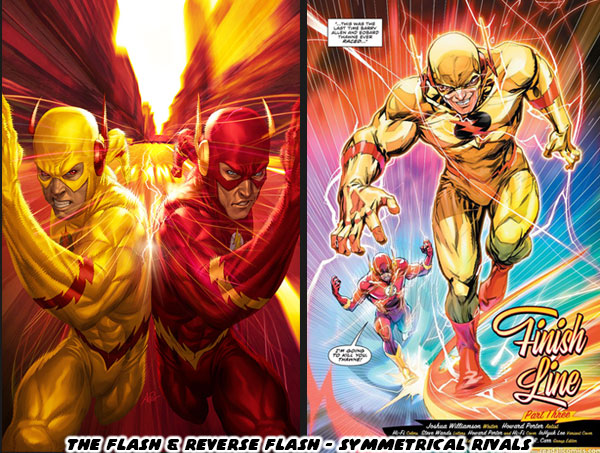

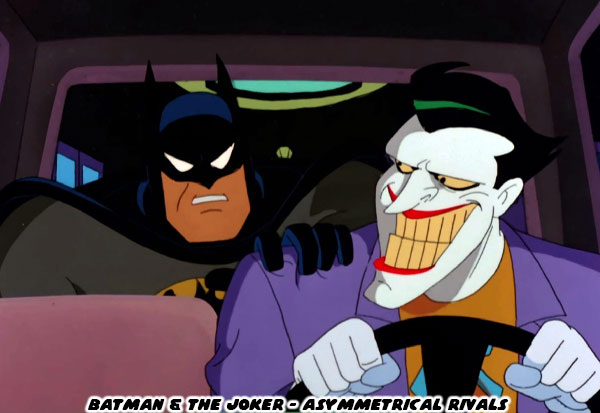
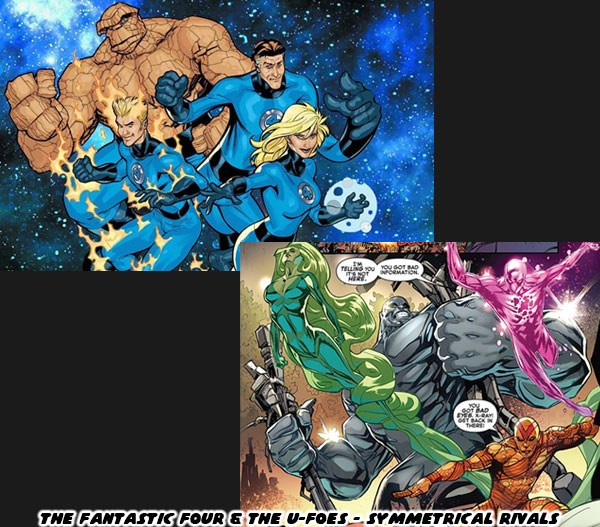
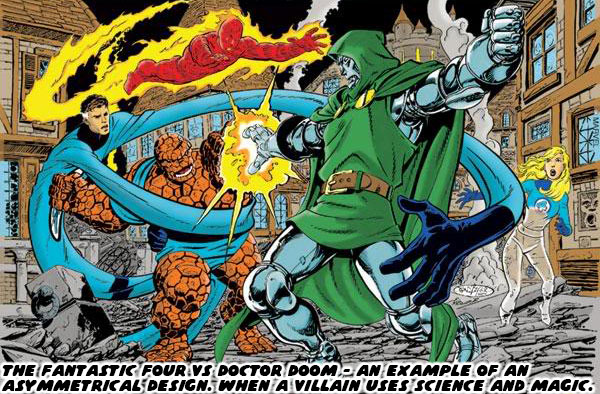
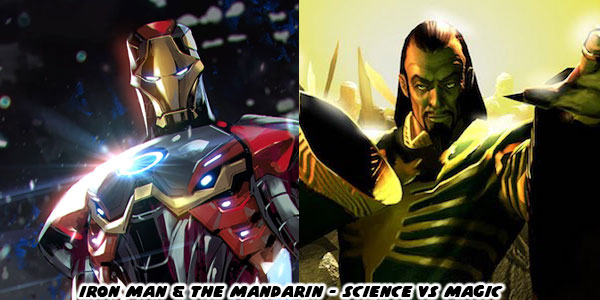
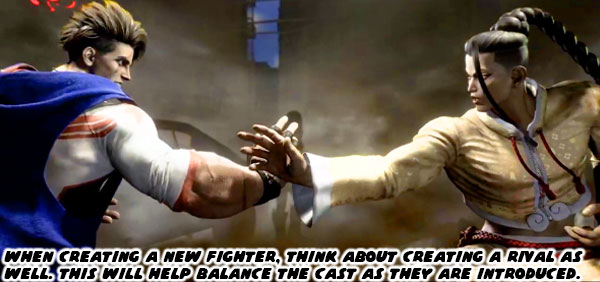
I think that sometimes developers don't understand why their game is not well received. There are elements that are shared across both US, and Japanese titles. If the most basic rules are ignored then the game feels lacking. One of the oldest tropes used by the industry is the casting of the main characters. The oldest fighting games always started with two, almost equal characters. This of course could be attributed to Player 1, and Player 2. They were sometimes friendly rivals, like Ken, and Ryu in the original SF. They could even be brothers like Yun, and Yang in SFIII. Whether friend or foe the leads were almost universally a Japanese martial arts master, and a Western counterpart. This rule seemed to apply to brawler games as well.
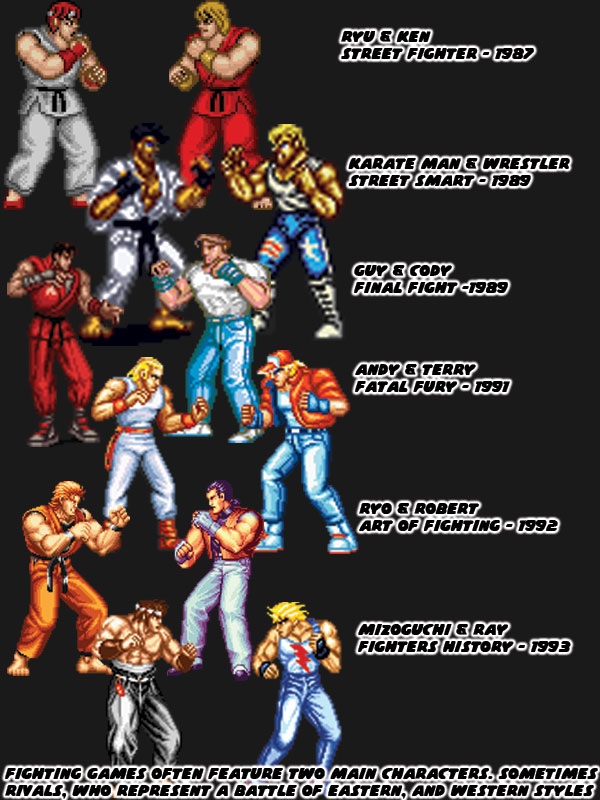
The rest of the cast often tended to be a mix of different styles, and different body types. This most basic rule of designing a cast was observed by just about every Japanese studio in the early '90s. Studios didn't yet realize that a fighting game could feature dinosaurs, robots, or aliens. The US would help redefine the genre when they got involved. Studios like Rare, Midway, and Atari took a unique approach to graphics, and controls, with games like Killer Instinct, Mortal Kombat, and Primal Rage respectively. Japanese studios kept things straightforward in the early days. The titles they developed relied on a Japanese, and American lead. At first they were pallet swaps with shared moves. Little by little the main characters were given their own unique set of moves, and special attacks.
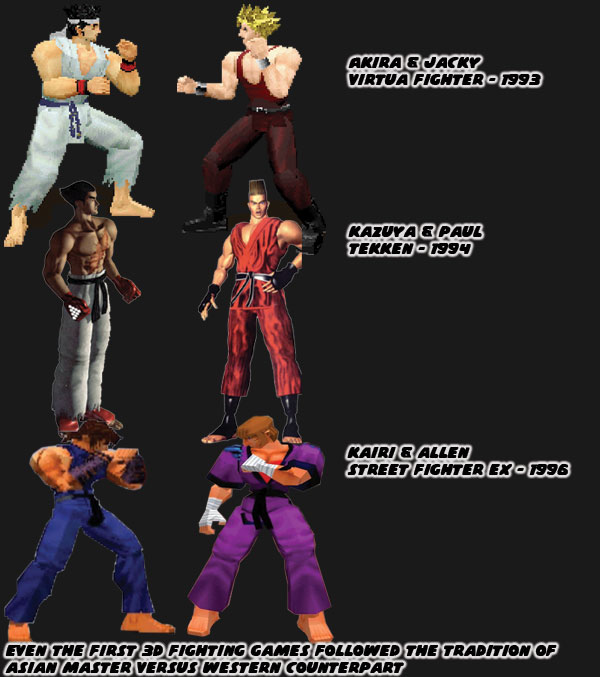
Technology evolved, and sprites gave way to polygons. The developers still followed the same basic formula. Japanese karate guy, versus USA karate guy. Despite the visual aesthetics it was becoming a slower, and more expensive proposition to stay with sprite-based technology. This became apparent when Capcom began development of Street Fighter III on their new CPS-3 hardware. The studio wanted to completely reboot the franchise. Ken, and Ryu were the only characters slated to return. The rest would be new faces. Alex was proposed to be the star of the game. For the first time in the studio's history, SF was released without a rival to the main character. Technically Gill, the boss character, was the main opponent to Alex. The proposed rival, Hugo, would not appear until months later in the expansion Street Fighter III 2nd Impact: Giant Attack. Introducing Luke first in SFV, and Jamie in SF6 was a repeat of history.
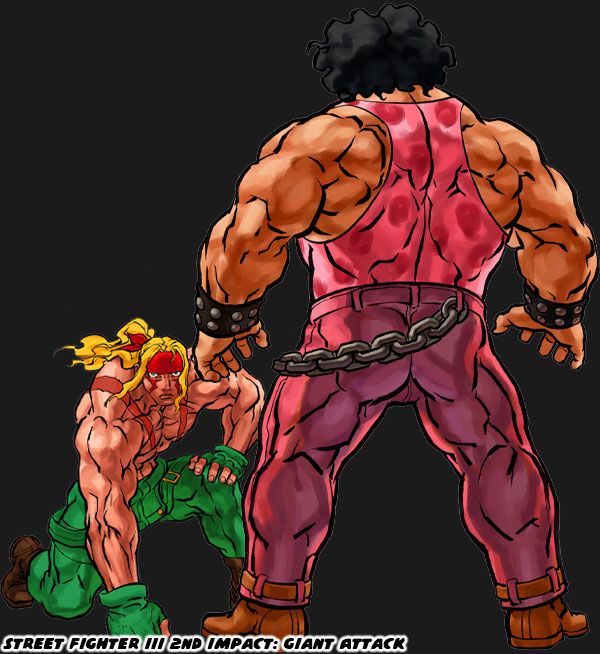
There is not one single reason why the SF characters became iconic while other fighting characters faded into obscurity. The success of the SF cast transcended the artist, and programmer. Their lasting status is a result of many factors. The look of the character, age, sex, features, color palette, wardrobe and even haircut were part of the equation. The way they moved, fought, and handled added to their mystique. Lastly their plot and purpose in SF canon helped solidify their status. In a way the most memorable characters were greater than the sum of their parts. One of the things that made SF so amazing was the careful use of balance, and symmetry. If you take a step back and look at the entire SF series you begin to spot the patterns. The balance of the titles was so well done that very few studios ever manage to recreate it, if even acknowledge it.
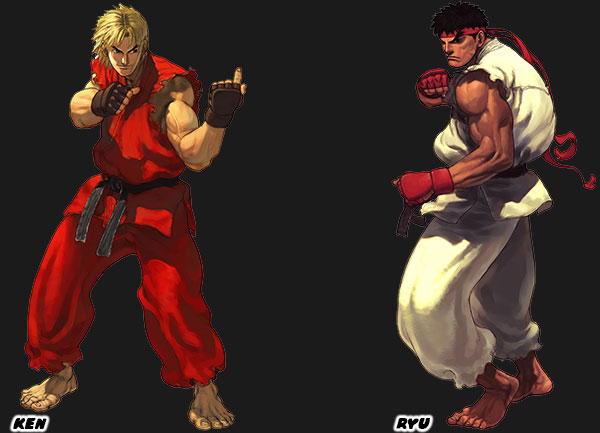
At the heart of almost every fighting game the designers know to put a main protagonist and to balance that character out with a rival. As I said above sometimes it is a friendly rival and other times it is a heated rival. In the planning stages these are generic, well-rounded strikers, essentially the Player 1 and Player 2 template from Karate Champ. At first look Ken and Ryu seem to be generic karate fighters. Those that have stuck through the series know that their look beguiles their ability. They look like strong fighters because of their huge muscle, and outfits. They draw the player into the world. They are human avatars and the gateway into the universe. We would not have identified with them right away had they been skinny kids wearing street clothes, or alien creatures on a distant star.
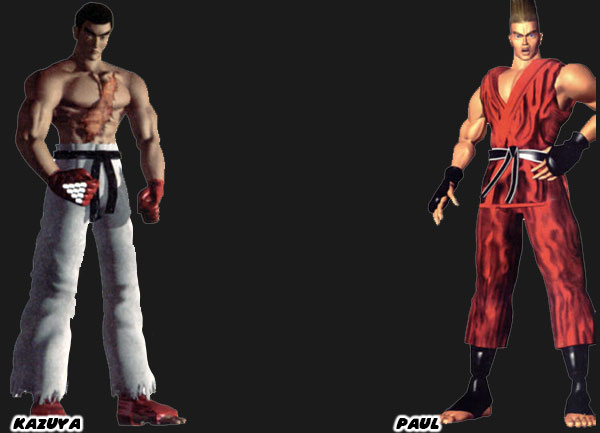
Every good fighting game has always begun with two main characters, balanced but unique in their own regards. Paul and Kazuya borrowed some of the stylings, and use of color from Ken and Ryu respectively. Although the plot, and fighters in Tekken got absurd in sequels, at the core it began as a three-dimensional response to Street Fighter II. Not every great fighting game had begun with two balanced protagonists though. Sometimes even great games needed some time to warm up before we got to see the counterparts join the cast. Before Luke, and even before Alex there was Haohmaru from Samurai Shodown in 1993. His bitter rival Genjuro was a former friend, and would not appear until Samurai Showdown II in 1994.
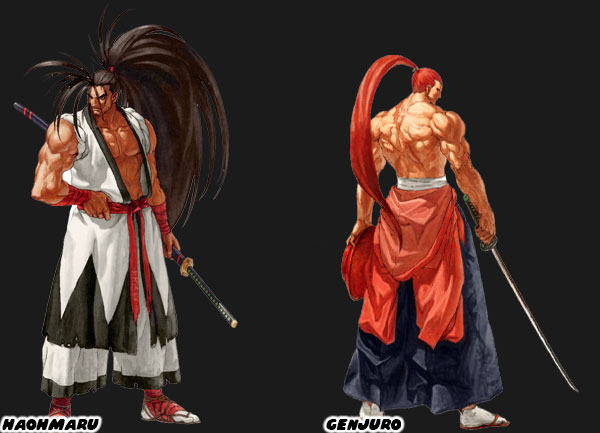
Even in the USA developers were becoming keen on the basic idea of a balanced fighting cast. Liu Kang, and Johnny Kage were the Ryu, and Ken reflections in Mortal Kombat. Scorpion, and Sub Zero however became the most obvious pairing. As the series progressed the designers at Midway continued adding ninjas by the pair, be they human or robot. For a while these "pallet swap" characters seemed the norm in fighting games. Designers managed to grasp the nuances that SF introduced with their "symmetrical" characters. What few studios caught was the idea of using asymmetry with rivals.
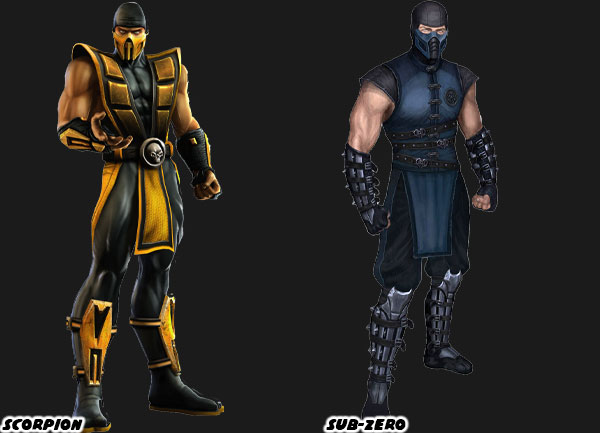
Ryu is associated with the mythical dragon. His uppercut special attack is even known as the dragon punch. Ryu thus assumes more than one identity in the SF universe. He is a hero in the classic tradition. He is smart, strong and wise for his age. His origins are Japanese and thus he carries the culture and tradition of the Japanese martial arts. Gouken, Ryu’s master and mentor, was killed by his own brother Gouki. This gave Ryu a tragic origin. Ryu travels the Earth searching for a purpose through and for battle. His abilities are as mythical and awe-inspiring as the dragon he symbolizes.
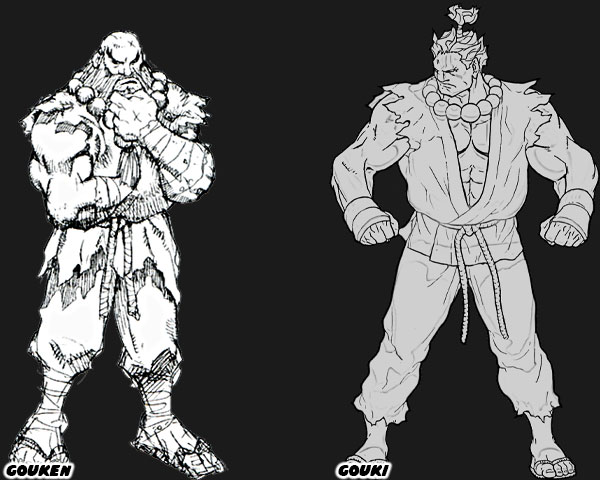
For every hero there is a villain. Sagat began his SF career as the original world champion and arch rival to Ryu. Sagat is a physically imposing man, standing well over seven feet tall and all solid muscle. To counter Ryu’s disciplined karate Sagat is the master of Muay Thai kickboxing, a very physical and dangerous form of martial arts. Sagat is symbolized by the tiger. The tiger is a revered creature throughout Asia because it holds both cultural and spiritual symbolism. In the zodiac the tiger is the second most powerful creature behind the dragon, but unlike the dragon the tiger is a real creature thus connecting the heavens to the Earth. Sagat’s special attacks included the tiger uppercut, and tiger fireball.
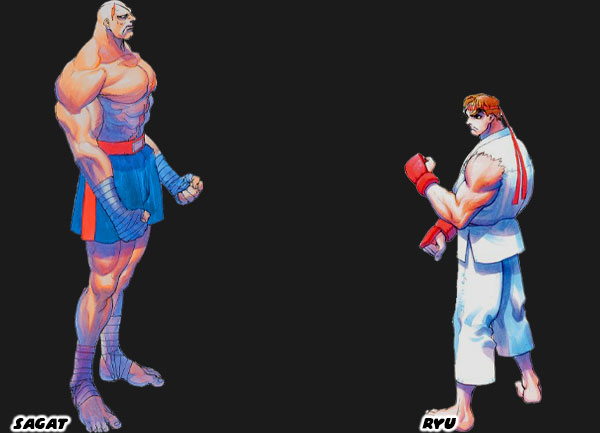
There is a grander philosophy behind the balance in the SF universe. No character exists within the universe “just because.” Whether intentional or by accident, the characters of Ryu and Sagat have stood to symbolize much more than simply fighting game icons. Visually any person can tell who the “good guy and bad guy” are even if they have never played the game before. Upon further inspection the character seems to have several connotations associated with his name and likeness. Cultural and historical ideals are placed on all of the characters in the series, and more so to the main characters. Good and evil characters become complex when given their history in the game, animé and manga.
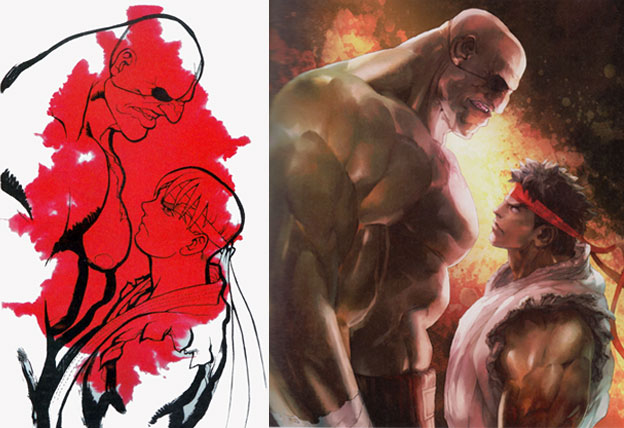
Both Ryu and Sagat are not black, and white, good and evil characters. They cross over into the gray area where combat exists simply for the sake of itself. Good guys sometimes have bad guy qualities (Ryu and his dark side or "Evil Hadou") and bad guys sometimes evolve (the newfound wisdom of Sagat). The character balance in SF is unique compared to other fighters because Capcom was the first studio to use the idea of two rivals as part of a greater whole. Despite their physical differences Ryu and Sagat are a balanced perfectly. Like the tiger and dragon set to be eternal rivals but never reaching conclusion. This is an example of asymmetry being used to balance the cast.

Symmetry was used heavily in the original SF. Every location featured two fighters that complimented each other. Ken and Ryu, Retsu and Geki, Joe and Mike, Lee and Gen, Birdie and Eagle, Adon and Sagat. The last two on the list were another example of great balance. While Ken balances Ryu, and Ryu balances Sagat, so too did Adon enter the equation to balance Sagat. He was the understudy, the Jaguar, ready to pounce on the aging Tiger. The original SF showed that it was possible to balance a cast without relying on similar styles or even backgrounds. Age could be used as a symbol of wisdom and technique (Gen) rather than as a way to "count the days" until a character was surpassed (Sagat). The idea of balance between these non-playable characters was fleshed out when SF II was developed. The World Warriors were an attempt at complete balance within the game. Although Ken had Ryu, the rest of the cast was lacking a balanced rival, those issues were addressed in following titles.
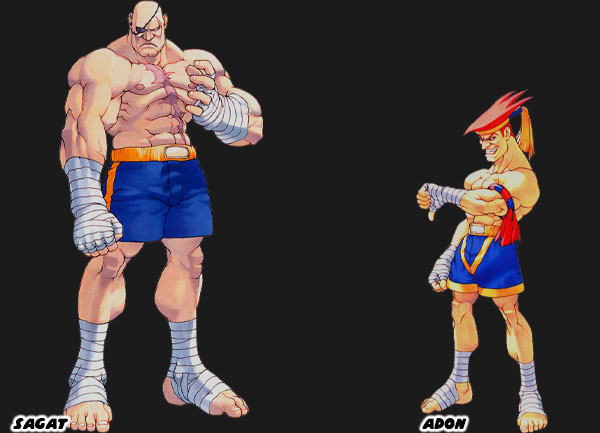
The idea of a younger upstart balancing out an established veteran returned with Chun-Li's friendly rival. As the only female in SFII Chun-Li represented many things in form and purpose. She was very similar to Ryu in that her inclusion was well thought out, and she captured many of the heroic ideals, however she was lacking her own "Ken." Cammy was supposed to replace Chun-Li in the draft of Street Fighter III. Regardless of that her addition in Super Street Fighter II was welcomed by fans. A young secret soldier using British military themes rather than traditional Chinese Kung-Fu garb helped cement her purpose. Cammy became a hit, whether gamers acknowledged her as Chun-Li's balance or not.
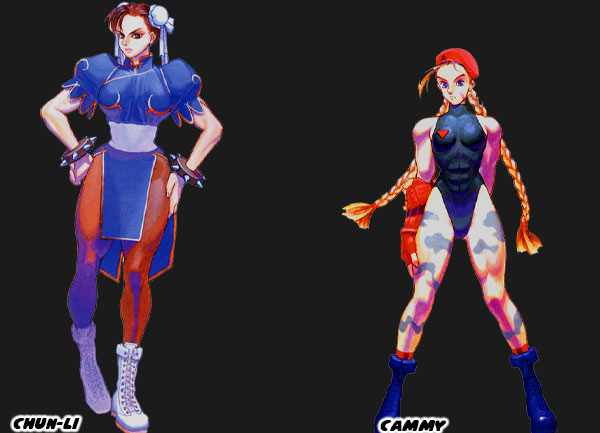
The idea of younger dopplegangers was very strong in the following sequels. Even more inspired was making them of the opposite sex. Sakura was very much a modern retelling of the Ryu character. She did not have the same martial arts path that Ryu had. She was the modern fighter, born to a media-saturated world that didn't carry over the old traditions of the ancient martial arts. She was brash and young, running headfirst into battles against more experienced fighters. Her natural ability saw her through the fights. In this way her spirit was as enduring as Ryu's.
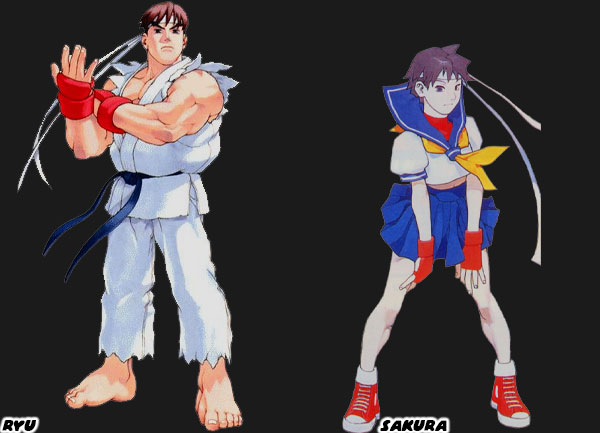
Masahiko Nakahira introduced a young female version of Ken in the Sakura Ganbare manga. With red sailor suit, and all! This perfectly mirrored Sakura and added another layer of balance to the Street Fighter Zero series. Strong female leads could be used in the series to balance each other out but uniquely for the men as well. Not many games featured male and female protagonists that complimented each other, let alone did it well.

Even boss characters with mysterious powers could be balanced by women with equally unique abilities. This was the case for Vega / Dictator. The boss of SFII had a unique fighting style that employed "Psycho" powers. Not to mention that he had a secretive past. To help expand on his background, and explain his powers the studio introduced Rose.
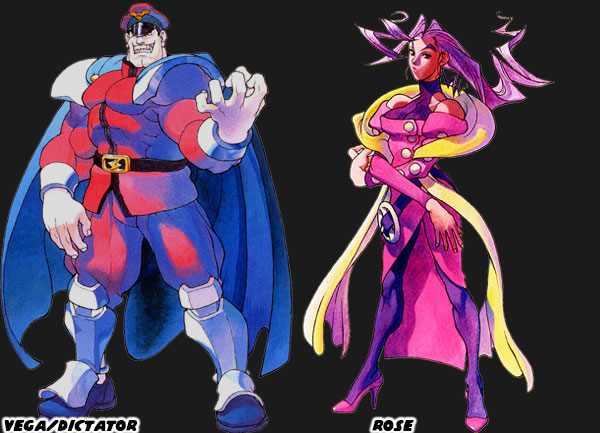
Female protagonists could also add an extra dimension to the martial art they represented. R. Mika was Zangief's very own "Sakura" but she also added some top rope moves too. Now wrestling in SF had a unique cross section of grappling techniques, and over-the-top pro wrestling moves. Makoto in SF III serves in a similar function, her form of karate is far different than what Ryu or Sakura practice, and she helps add an additional level of balance to the universe.
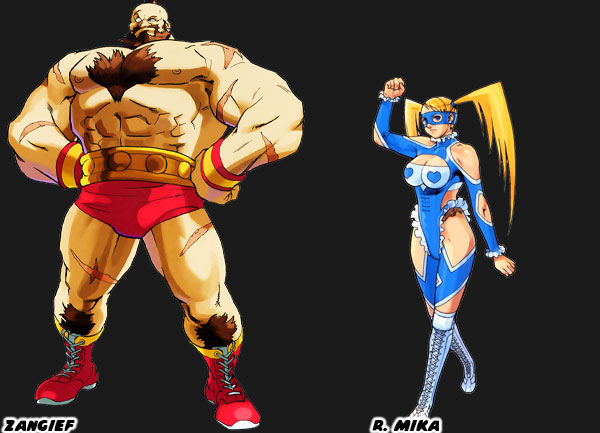
Capcom producer Noritaka Funamizu was able to connect various games through the Zero series, and help make for some interesting balance ideas. For example he tied together the worlds of Final Fight to Street Fighter, and Street Fighter II. Relationships between characters were established. Even though these men weren't against each other in canon, the military theme and evil fighting style of Rolento was a good way to balance out the heroic soldier Charlie Nash.
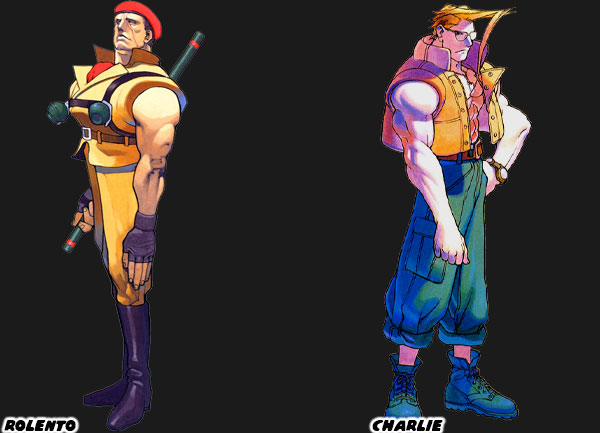
However not every character in the SF universe had to represent a specific style. This was an open tournament, and brawlers were welcome to fight. The diversity of characters helped ensure that players would be able to find one that suited them. Among these characters the idea of symmetry remained. Birdie and Sodom were characters on the fringe of the SF universe yet whose oddball style helped break up the monotony of the traditional arts.

The most memorable of the unique characters would have to be Dhalsim and Blanka. Their esoteric fighting art, or lack thereof, added an extra dimension to the SF universe. Those characters represented the unknown or untapped human potential. They represented the forms yet to be discovered by the "modern" world as much as they were an homage to characters from pop culture films. Dhalsim and Blanka blew the doors of the SF universe wide open, so that strange styles and characters like Urien, Gill and Necro would "fit" into the world.
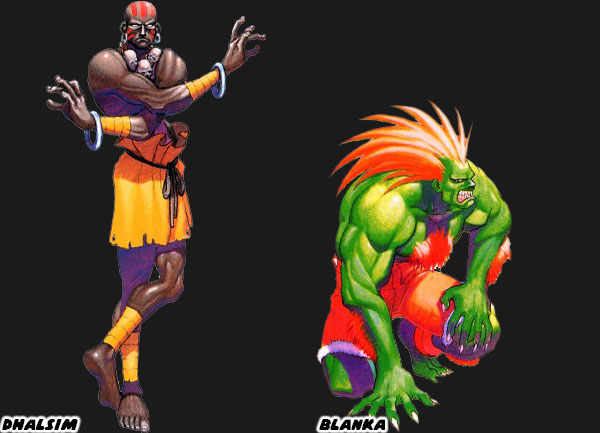
If there was one fighting game whose entire purpose was a quest to balance the entire SF cast it would have to be Street Fighter EX. The game was filled with amalgamations of the original world warriors as well as nods to real fighters, and pop culture as well. So the series now had two balanced wrestlers, two balanced karate fighters, two balanced military veterans, etc. The main characters in the story, Kairi and Allen, served to be the respective Ryu, and Ken of that world. Notice that Kairi has the youthful appearance of Ryu with the scarring and solitary eye of Sagat. Notice also that his counterpart has stylings reminiscent of Bruce Lee and Chuck Norris. Ken should have been so unique! These parallels went right down the line with the rest of the cast. An evil military fighter named Doctrine Dark countered Guile, Pullum Purna balanced Chun-Li, and Skullomania countered Dhalsim.
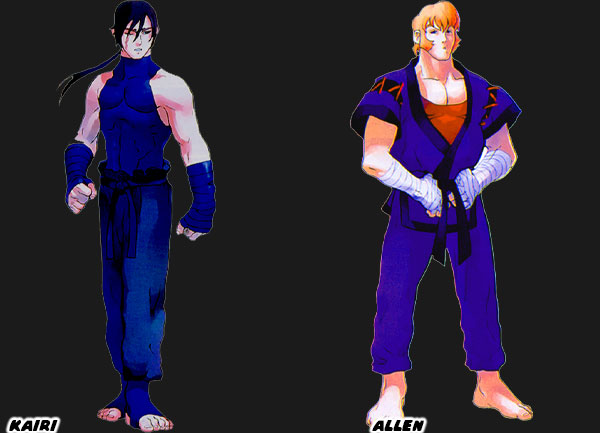
My favorite character, only because I am such a mark for wrestling, was Darun Mister. There has not been a wrestler invented yet that has been a better compliment to Zangief. He was large and burly plus had his own unique cosmetic features. Most important he was based on a real (yet relatively unknown in the West) undefeated wrestling legend. Unlike the sailor Vodka Gobalsky that became wrestler Zangief, almost as an afterthought, Darun had a direct connection to wrestling. Do a Google search for the "Great Gama" and read about the Indian's amazing exploits back when wrestling was "real." Darun is easily the best wrestling character not featured in any other Capcom game including Muscle Bomber / Saturday Night Slam Masters. Darun was placed in the game as the true rival to Zangief and the outcome of their encounter has never been concluded. The EX cast should have returned in latter numbered SF games because they so perfectly balanced the established icons.
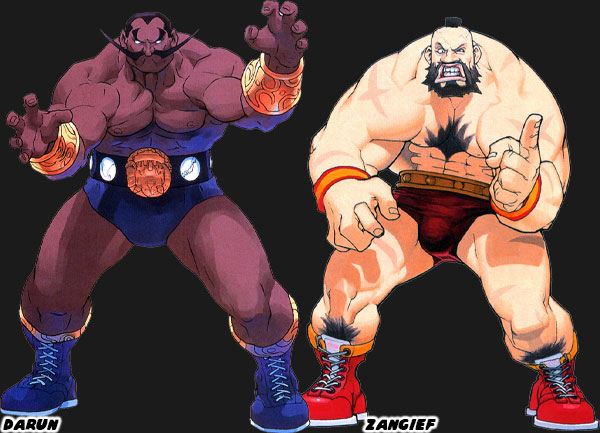
The idea of balance and symmetry was not as strong between the characters introduced in SF III, and SF IV when compared to the original World Warriors. There were several reasons for that. First off the studio wanted to completely redo the series. They had to as a sense of being practical. A good number of the developers that had worked on SF, SF II, SF Zero had left Capcom over a decade to start up projects at SNK, DIMPS, and ARIKA. In order to move the franchise forward Capcom wanted to only bring back Ken, and Ryu. They would get caught up in entirely new fight, with new friends, and opponents. By featuring men, and women of different ages, and backgrounds, it was an attempt to recreate the magic of SF II. There was a problem however, fans weren't ready to let go of their favorites. Ken, and Ryu were the stars of the franchise from a narrative standpoint. But audiences enjoyed the gameplay with their favorite characters. The rest of the cast was so well done, and so well balanced that it seemed a waste to throw them away. Imagine the reaction to a studio that made a great racing game, but then decided to throw away all the pre-2000 cars in favor of only post 2000 models. That sort of explained the post SF II reactions to the series.
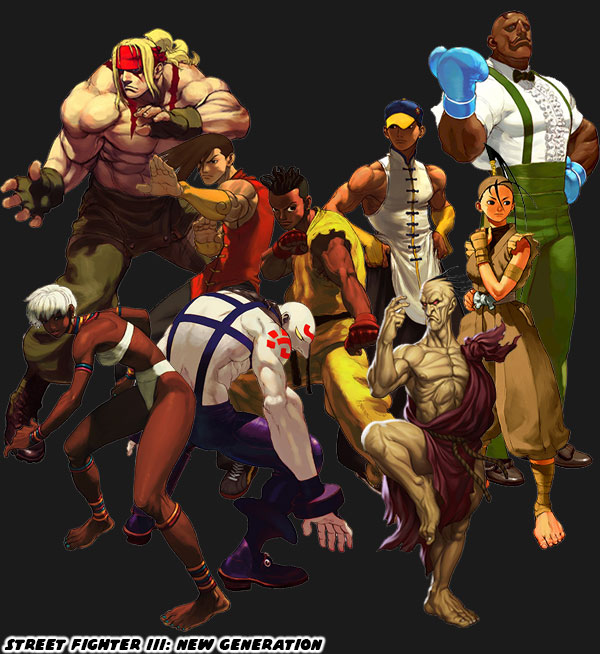
Alex had the elbows of Adon, the headbutt of Birdie, and the suplex of Zangief, but he wasn't as fun to play with as those individual characters. Dudley was an amazing boxer, and played completely different than M. Bison/Boxer. Some wanted to see how the two would match up. The leggy Elena was not quite Chun-Li, Necro was not quite Dhalsim. Fans had a hard time warming up to the cast, and their new fighting mechanics. In time they would enjoy what Capcom was trying to do, but it took two more updates, and the addition of Chun-Li, Urien, Hugo, Gouki, Makoto, Q, Remy, and Twelve to get there. There were similar growing pains with Street Fighter IV, and V. Continually going back through the roster, and adding fan-favorite characters wasn't a bad thing. Nor was trying to experiment with new styles. The titles felt like Capcom was going through the motions, but the games were not progressing. The series was moving on the whims of a fickle producer with an odd sense of humor. Then something radical happened. Yoshinori Ono was let go, and Street Fighter 6 got bold new direction.
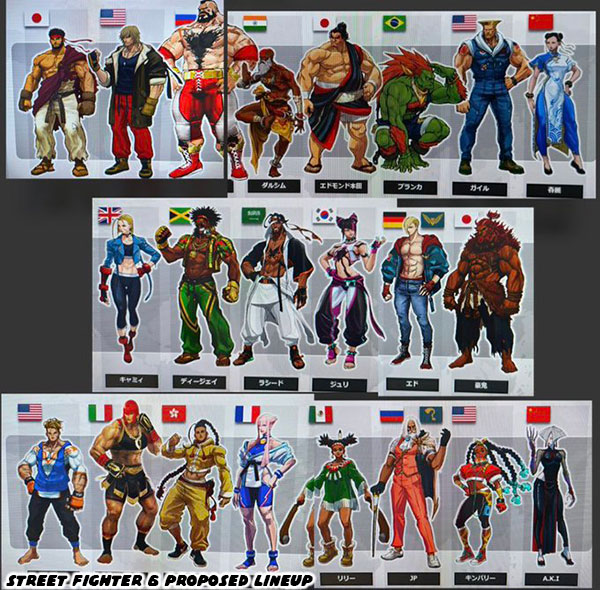
The studio seemed to learn from the reactions to SF IV, and V. First off there were no comedy fatties, or other silly characters that distracted from the lineup. These people almost all looked like representatives of a unique fighting art. Director Takayuki Nakayama, Producer Kazuhiro Tsuchiya, and Designer Yusuke Hashimoto wanted to tell an entirely new story, without losing touch with their legacy. The old stomping grounds of Metro City would be revisited. The original eight World Warriors returned. Representatives from Super Street Fighter II, IV, and V as well. Sadly nobody from Zero, or III made the cut. Of course DLC would remedy that. Then there were eight entirely new faces (five of which were women!) from around the world. The rules of balance, and symmetry had returned. Luke wants to parallel the journey of Ryu, while having Jamie acting as his Ken. The balance wasn't as heavy-handed as it was in the EX series. That's a good start. A few of the new characters seemed destined to be perfect match-ups for the icons.
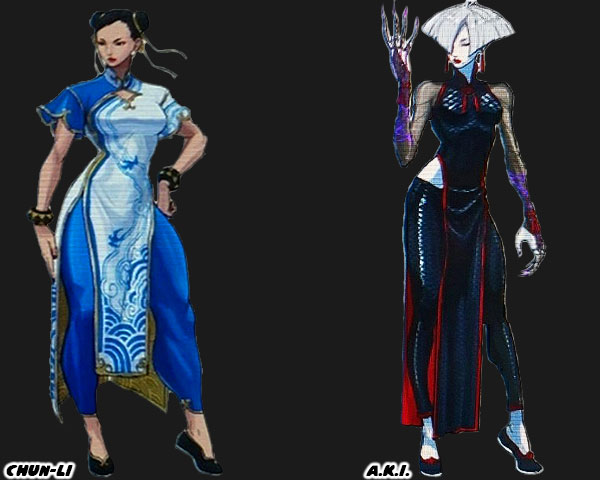
Chun-Li had returned with an entirely new look. I'm still going to write about her in the future. For now I want to mention that A.K.I seems to be her new balance. Both women are from China. Chun-Li represents a classical fighting tradition. Her kicks are unparalleled, as is her sense of duty to the police. A.K.I. looks like a villain right out of a comic book, or possibly action movie. Her porcelain-white skin is eerie, making her appear almost supernatural. She wears flats like Chun-Li, but the similarities end there. Her costume is black, a sinister shade, and form fitting. She has pant leggings, and tulle-sleeves over her pale arms. She lacks the muscle definition of Chun-Li, but has claw-like jewelry. She's signaling that she is not a kicker, but a slasher. Just like Han, the villain from Bruce Lee's Enter the Dragon. I can't wait to learn more about A.K.I.
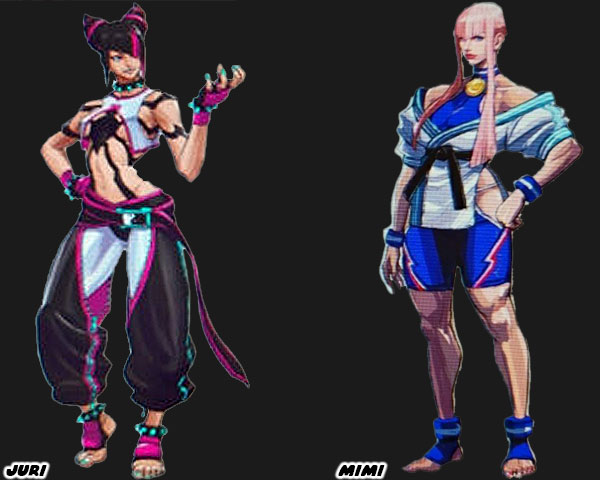
Juri is in the game as well, long considered the balance to Chun-Li, as she was cut from the same cloth. The diabolical Korean has a new match up to consider. Mimi hails from France, and seems to have legs longer than either Chun-Li, or Juri. Not only that there is minimal fabric restricting the range of motion on her kicks. Fans have long contemplated when the French kickboxing art of savate would be featured in the series. To be fair Remy in Street Fighter 3: 3rd Strike was a practitioner of savate. His ability to throw "sonic boom" fireballs, and use a flash kick similar to Guile sort of distracted from that. Hopefully Mimi brings entirely new kick mechanics to the franchise.
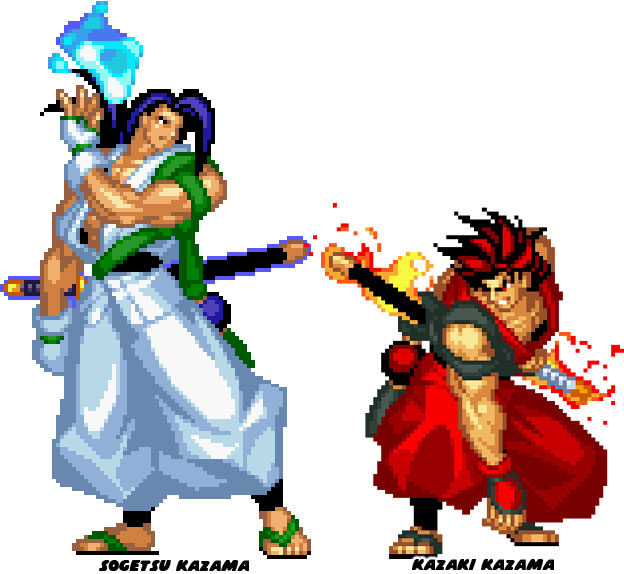
I want everyone reading this blog to study the symmetry, and balance between other characters featured in Capcom fighters like Rival Schools, and Vampire / Darkstalkers. I want you to look at SNK, and all the other game studios that made good use of balance. There was a method to their success. If only the designers working on SF IV, and V had taken the same consideration at the ways in which characters used to compliment each other, through the years, and through different games. Then they would have shaped their cast accordingly. That's what I think anyhow. I would like to hear your thoughts on the symmetry, and balance of character designs. Post your takes in the comments section. If you would like to sponsor me please visit my Patreon page and consider donating each month, even as little as $1 would help make better blogs and even podcasts!